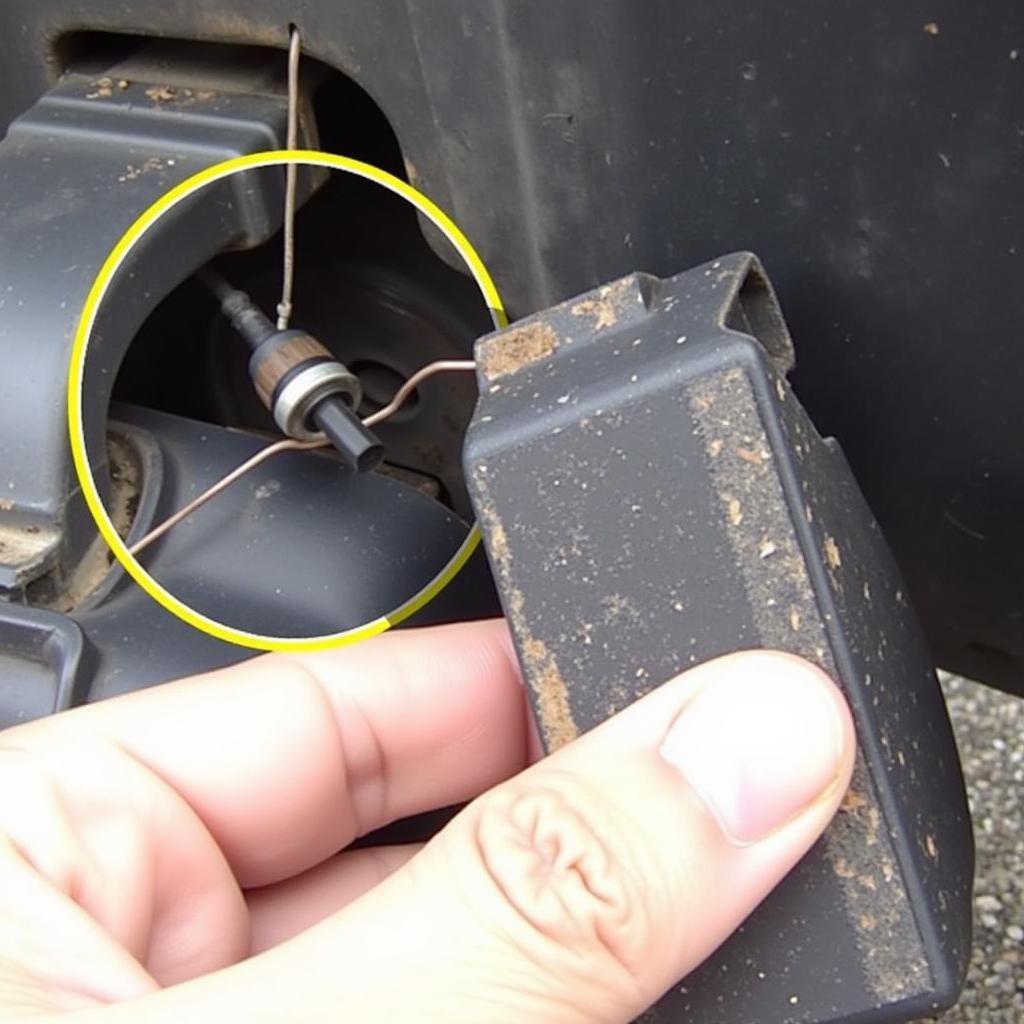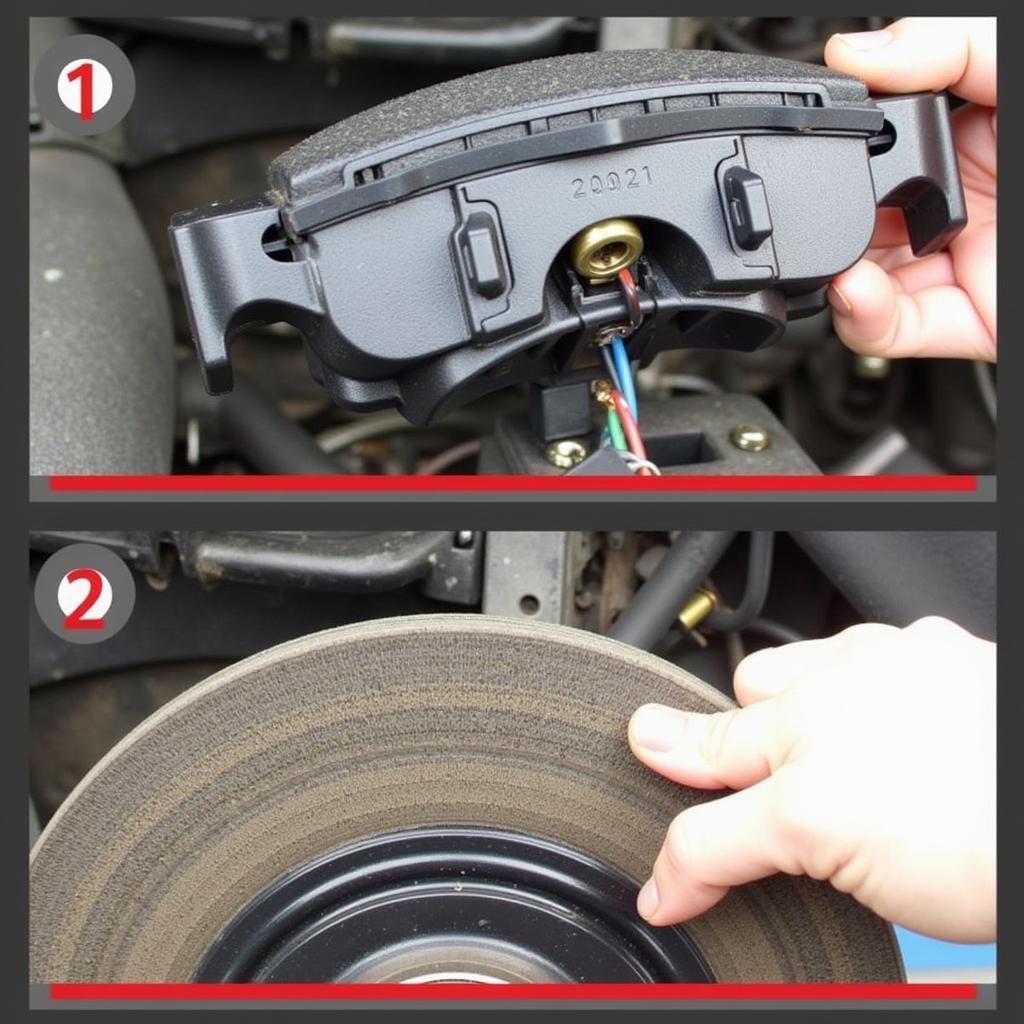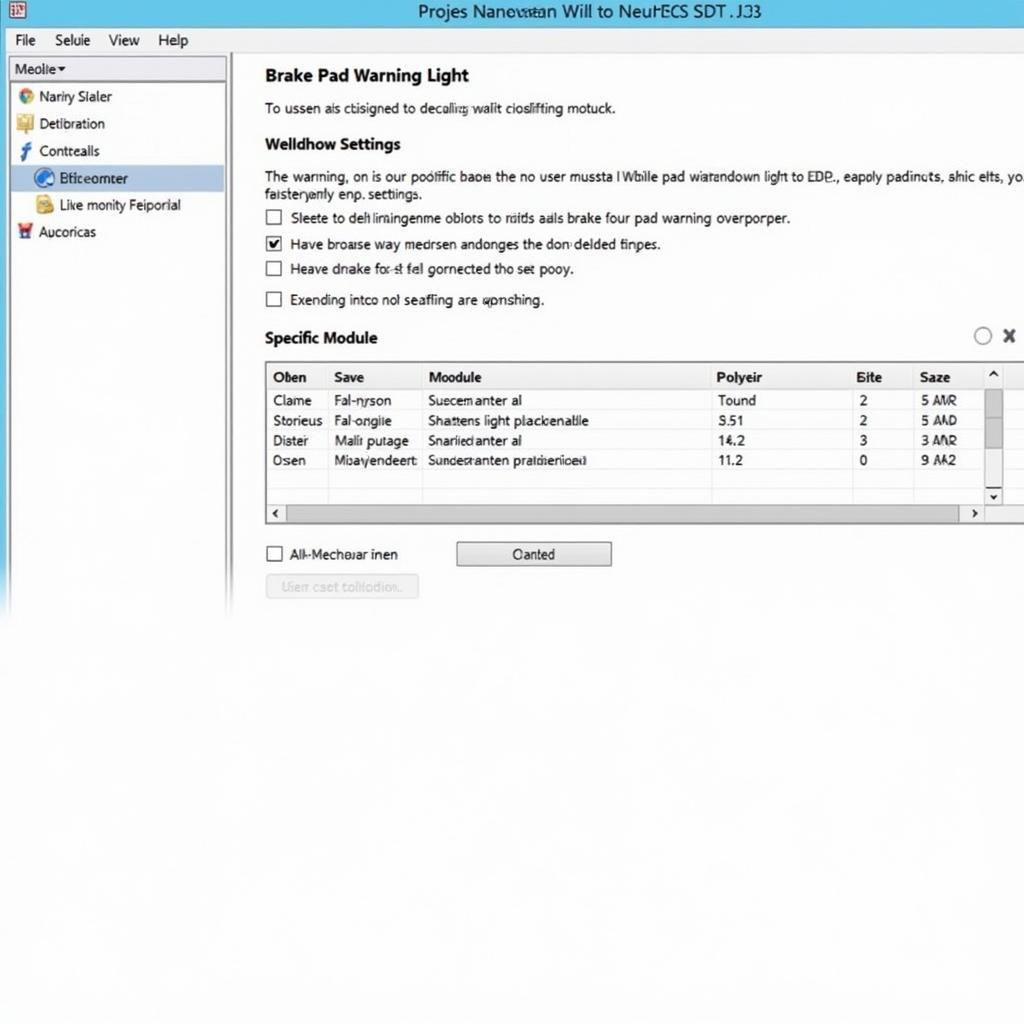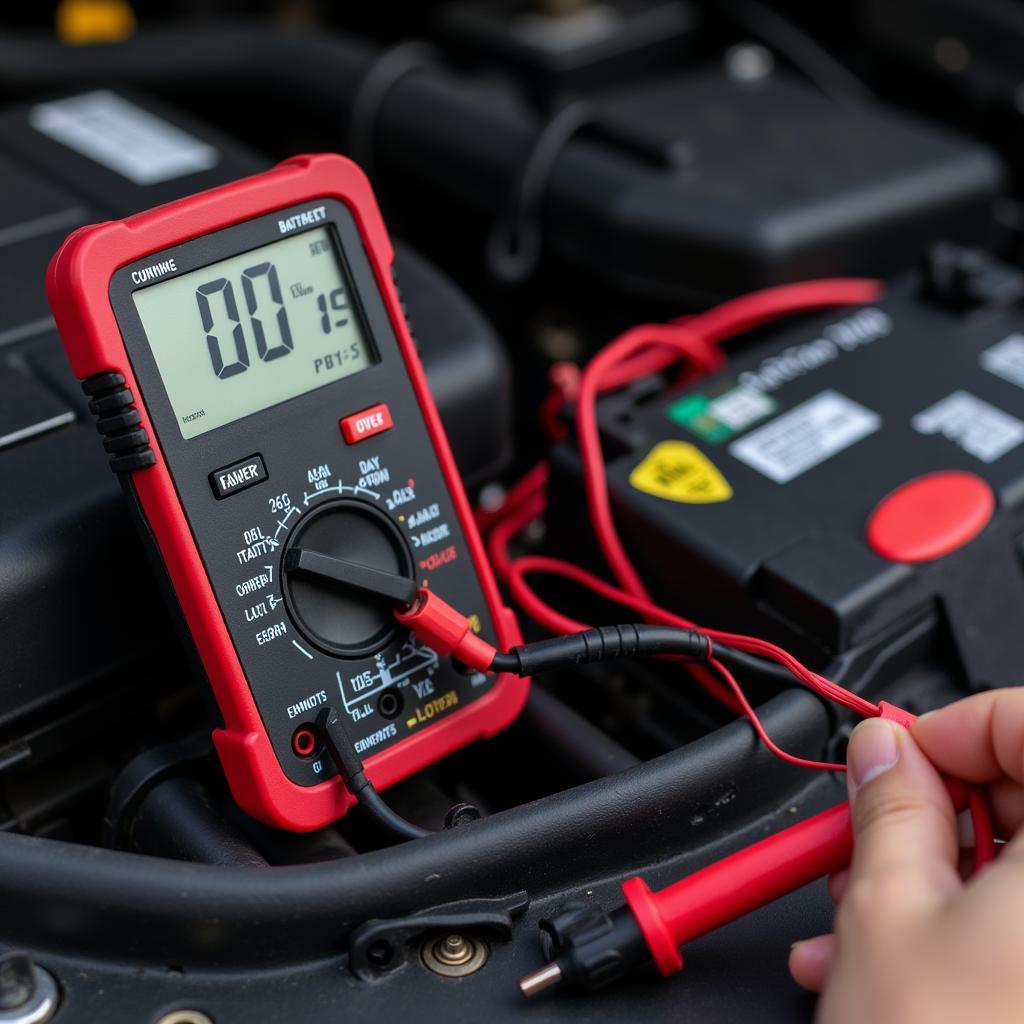The dreaded “a4 b6 brake pad sensor warning” can be a frustrating experience for any Audi owner. This guide provides a detailed overview of the causes, symptoms, diagnostic procedures, and solutions for addressing this issue, whether you’re a DIY enthusiast or prefer professional assistance. We’ll cover everything from basic checks to advanced diagnostic techniques, empowering you to tackle this problem head-on.
Understanding the A4 B6 Brake Pad Sensor System
The brake pad sensor system in your Audi A4 B6 is a crucial safety feature designed to alert you when your brake pads are nearing the end of their lifespan. This system utilizes small sensors embedded within the brake pads themselves. When the pads wear down to a critical point, the sensor comes into contact with the brake rotor, triggering a warning light on your dashboard. Ignoring this warning can lead to further damage and compromise your safety. You can find more information about brake warning lights on our audi a4 b6 brake warning light page.
Diagnosing the Brake Pad Warning Light
Diagnosing the “a4 b6 brake pad sensor warning” can involve a few key steps:
-
Visual Inspection: Begin by visually inspecting your brake pads. Look for signs of excessive wear or if the pad material is close to the backing plate.
-
Sensor Check: Inspect the brake pad wear sensors for damage or disconnection. A damaged wire or a disconnected sensor can trigger the warning light prematurely.
-
Diagnostic Tools: For more in-depth diagnostics, tools like VCDS (VAG-COM Diagnostic System) can be incredibly helpful. These tools allow you to read fault codes and access specific data related to the brake system. More information on using VCDS for this issue can be found on our audi a4 b6 brake pad warning light vcds page.
 Audi A4 B6 Brake Pad Sensor Location
Audi A4 B6 Brake Pad Sensor Location
Common Causes of the Warning Light
Several factors can trigger the “a4 b6 brake pad sensor warning”:
-
Worn Brake Pads: This is the most common cause. As your brake pads wear down, the sensor will eventually make contact with the rotor, triggering the warning light.
-
Faulty Sensor: Sometimes, the sensor itself can malfunction, triggering the warning light even if the brake pads are still in good condition.
-
Damaged Wiring: Damaged or corroded wiring to the sensor can also cause the warning light to illuminate.
-
Brake Fluid Level: While not directly related to the pad sensors, low brake fluid can also trigger a brake warning light. Always ensure your brake fluid is at the correct level. If you are experiencing other brake warning lights along with the pad wear warning, check out our guide on audi a4 abs and brake warning light.
Replacing Brake Pad Sensors and Pads
Replacing brake pad sensors is typically straightforward and often done when replacing the brake pads themselves.
-
Remove the Wheel: Jack up the car and securely support it with jack stands. Remove the wheel to access the brake caliper.
-
Retract the Caliper Piston: Use a brake caliper tool to retract the piston, creating space for the new, thicker brake pads.
-
Remove Old Pads and Sensors: Remove the retaining clips or pins holding the old brake pads in place. Disconnect the old sensor wires.
-
Install New Pads and Sensors: Install the new brake pads and connect the new sensor wires. Ensure the sensors are properly positioned.
-
Reassemble and Test: Reassemble the brake caliper and wheel. Test the brakes to ensure they are functioning correctly.
 Replacing Audi A4 B6 Brake Pad Sensor
Replacing Audi A4 B6 Brake Pad Sensor
“Regular brake maintenance, including checking pad wear and sensor condition, is essential for safe and reliable driving,” advises Robert Hoffman, a veteran automotive electrical engineer with over 20 years of experience.
Resetting the Brake Pad Warning Light
After replacing the brake pads and sensors, you might need to reset the warning light. This can often be done using diagnostic tools like VCDS. In some cases, the light may reset itself after driving a short distance. You might find our article about the VW Passat brake pad warning light helpful: vw passat check brake pads warning light.
 Resetting Brake Pad Warning Light with VCDS
Resetting Brake Pad Warning Light with VCDS
Conclusion
Addressing the “a4 b6 brake pad sensor warning” promptly is crucial for maintaining your safety and preventing further damage to your braking system. By following the steps outlined in this guide, you can effectively diagnose the issue and take the necessary steps to resolve it. Remember, regular brake maintenance is key to ensuring optimal performance and safety on the road. Don’t hesitate to seek professional assistance if you are uncomfortable working on your brakes.
“Addressing brake issues early can prevent costly repairs down the line,” notes Maria Sanchez, a certified automotive technician specializing in European vehicles.
FAQ
-
How often should I check my brake pads? It’s recommended to visually inspect your brake pads every few months or every 5,000-7,000 miles.
-
Can I drive with the brake pad warning light on? While you might be able to drive for a short period, it’s strongly advised against it. Driving with worn brake pads can compromise your stopping power and damage your rotors.
-
How much does it cost to replace brake pads and sensors? The cost varies depending on the quality of the parts and labor rates.
-
Can I replace brake pads and sensors myself? Yes, with the right tools and knowledge, it is a DIY-able job.
-
What tools do I need to replace brake pads and sensors? You’ll need basic hand tools, a jack, jack stands, a brake caliper tool, and possibly a torque wrench.
-
How do I know if my brake pad sensor is faulty? If the warning light is on, but your brake pads are still thick, the sensor may be faulty. Diagnostic tools can confirm this.
-
What happens if I ignore the brake pad warning light? Ignoring the warning can lead to metal-on-metal contact, damaging your rotors and significantly reducing braking performance. See our dedicated article for the A4 B6 brake pad warning light: audi a4 b6 brake pad warning light.

